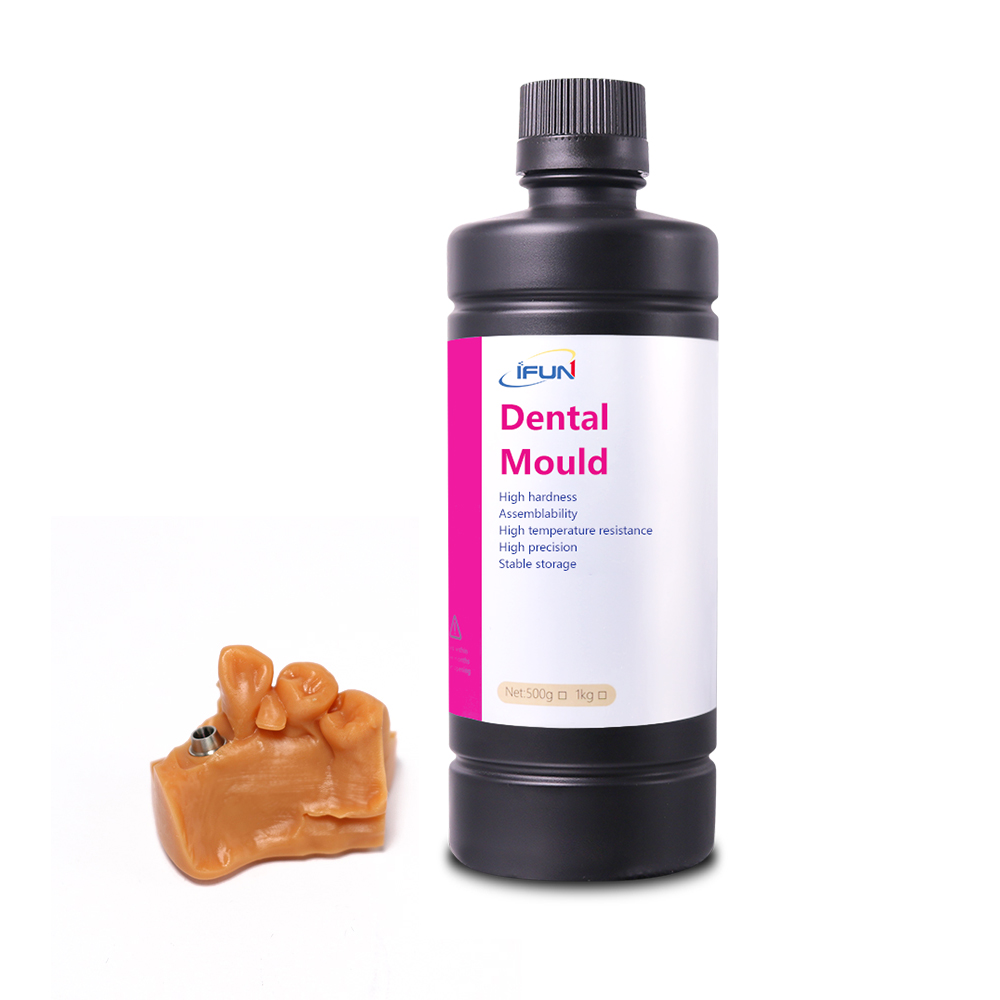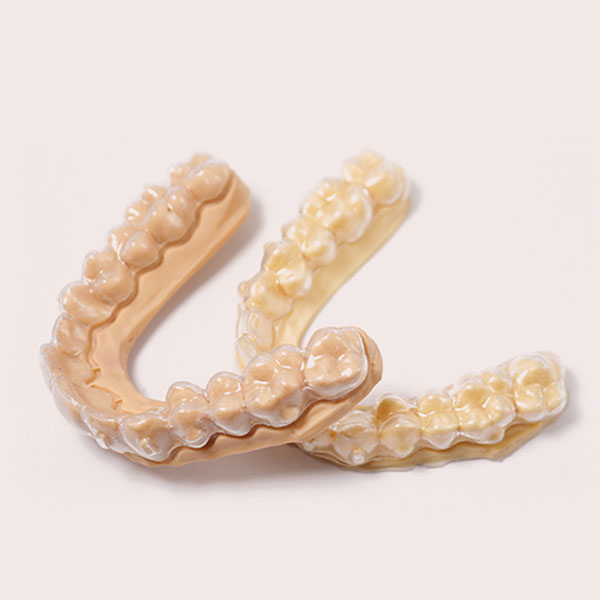BPA Free
Dental model resin(#3160)
- Natural color and matte finish for easy viewing
- High precision, high hardness, can be inserted and extracted multiple times, suitable for dental implant molds
- High temperature resistance, no deformation of pressed braces, suitable for orthodontic dental molds
- Low creep, long-term storage does not change
- Eco-friendly material, low odor, low irritation
C6H6 Free

High accuracy
The 3160 resin printed tooth mold has a clear edge, which fully meets the requirements of dental restoration accuracy.

Suitable for orthodontic dental models
3160 resin has high strength and high temperature resistance; it is easy to remove after lamination and will not stick to the model, so it can be well used for orthodontic lamination.

Suitable for dental implants
90% of the surface accuracy should be controlled within 100μm, and the accuracy of the edges and occlusion points of the model is within 50μm.

Customized production
With LCD 3D printer, it takes only 40 minutes to print 8 models, about 5 minutes per piece. 1KG of resin material material can print 100 pieces of dental molds.
Dental Model Application
How to use dental moldel resin to make orthodontic braces >>
here are the steps to create orthodontic aligners using 3D printed dental models and resin:
- Capture digital scans or impressions of the patient’s teeth using an intraoral scanner or traditional dental impressions.
- Use specialized software to create a digital model of the patient’s teeth and design the orthodontic treatment plan, including the desired teeth movement.
- Employ a 3D printer to produce dental models of the patient’s teeth using biocompatible resin material.
- Fabricate clear thermoplastic aligner trays by vacuum forming or thermoforming over the 3D printed dental models to create the desired shape for each stage of the treatment plan.
- Finish the orthodontic aligners by trimming any excess material and adding necessary attachments or features.
- Instruct the patient on the proper use and care of the orthodontic aligners, including wearing schedules and maintenance.
- Conduct regular check-ups and adjustments to track progress and ensure the treatment plan is proceeding as expected.
Please note that the actual production and use of orthodontic aligners require specialized knowledge and training in dental technology and orthodontic treatment.
Specifications of Dental model resin(3160)
Content Data value Testing method Viscosity 380-400cps(25℃) ASTM D1084-1997 Density 1.2 ASM D1875-69(1980) Shrinkage <0.5% Capillary method Hardness >82D ASTM D2240-05(2010) Deformation temperature 120℃ ASTM D1929-1996 Bending strength >60 MPa ASTM D1781
Dental Model Print Samples
Enable 3D Digital Production






